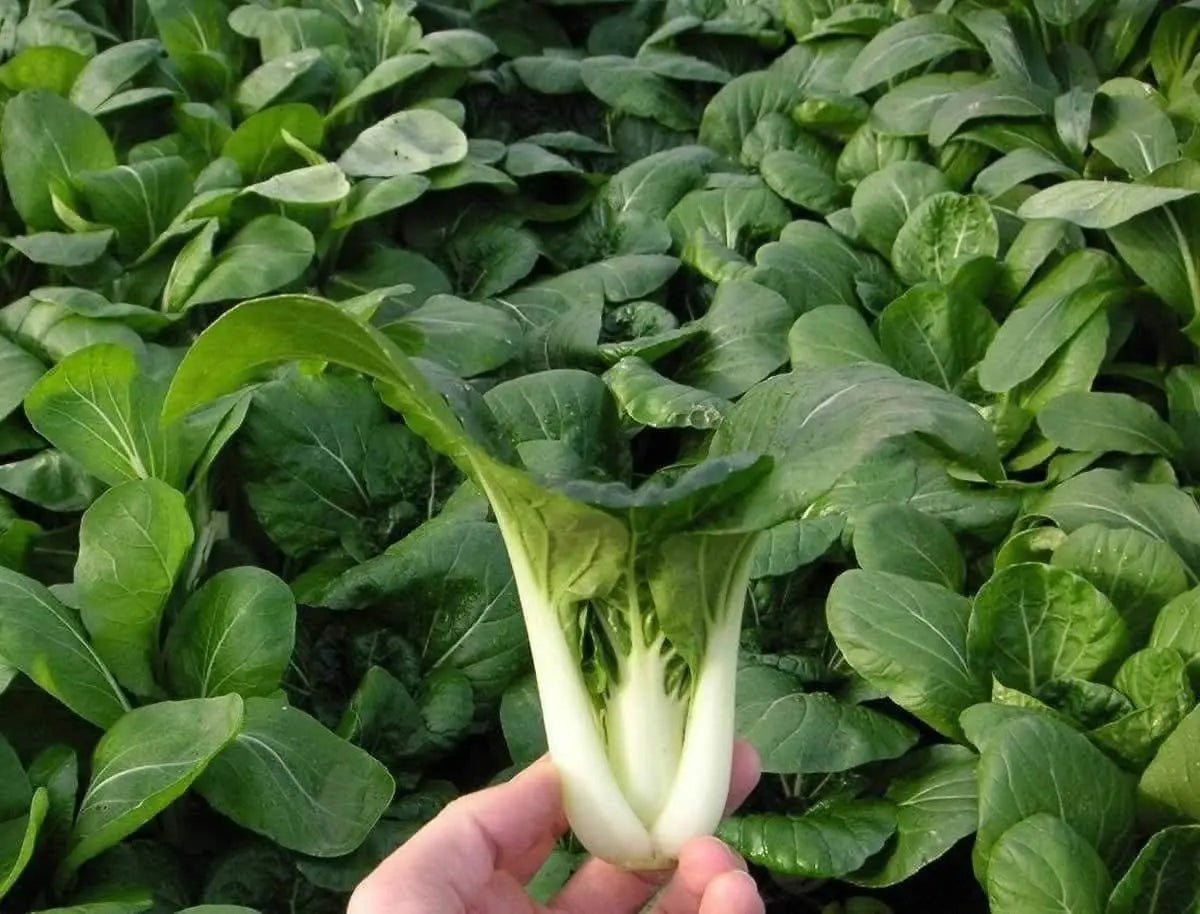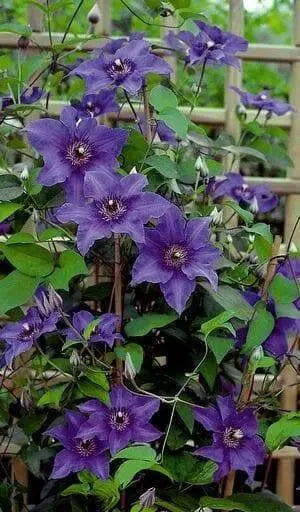
ASIAN VEGETABLE SEEDS
SALE NOW ON
These Jamaican Callaloo Seeds yield a tasty, tropical vegetable that reaches maturity in 45-70 days. The Amaranthus mangostanus is a non-GMO, heirl...
View full detailsMust Have Herb for many South Asian and Caribbean dishes. (Eryngium foetidium) Also called Eryngo or Ngo Gai KNOW IN JAMAICA AS Spirit Weed kn...
View full detailsThis heirloom variety of Hibiscus sabdariffa, also known as Jamaican Red Sorrel or Indian Sour Leaf, has been traditionally used for its medicinal ...
View full detailsTrinidad pimento peppers, also known as Seasoning peppers , Capsicum chinense, are a staple in Trinidad and Tobago's cuisine. These peppers add a u...
View full detailsThese Calabrian pepper seeds (Capsicum Annum) are prized for their rare and fiery nature, boasting a distinct and complex taste that is highly soug...
View full detailsThe Trinidad Pimento Pepper, also known as Seasoning pepper, is a popular cooking pepper in Trinidad and Tobago. It changes color from light green ...
View full detailsThis Sea Moss, also known as Irish Moss, is sourced from Jamaica and is 100% natural and raw. Irish moss - SHOP JAMAICAN PRODUCTS Try our ...
View full detailsThese Pigeon Pea Seeds, also known as Gandules Beans, are a type of tropical green pea known as Jamaican Gungo or Congo Peas. They are scientifical...
View full detailsPlectranthus amboinicus, also known as Cuban Oregano, Spanish Thyme, or Mexican Mint, is an herb native to Asia. Its distinctive fuzzy grayish gree...
View full detailsTurkey berry Pea Eggplant Seed -Solanum Torvum AKA Jamaican Susumber Or Gully bean Warm season annual Approx. 50-60 seeds in packet. (A seed will ...
View full detailsScotch Bonnet (Caribbean Mix) -Open Pollinated, Untreated ,Organic,Heirloom !From my Native Island, Jamaica., Red,Yellow ,Chocolate .Fresh organic ...
View full detailsSHOP MORE FRESH PEPPER PODS aJI DULCE peppers are available year-round Ají dulce, ají cachucha, ajicito, or 'ají gustoso". MAKE fresh , PUERTO RIC...
View full detailsThese Jamaican Chocolate Scotch Bonnet Pepper seeds are sourced directly from my homeland. They are legitimate Chocolate Scotch Bonnet peppers, not...
View full detailsThese organic Aji Dulce pepper seeds are perfect for those who enjoy small, sweet peppers without any heat. Similar to habaneros but without the sp...
View full detailsThis variety of Bitter Melon Seeds, known as Jamaican Cerasee, is a type of Asian gourd that produces warty, green, and tapered fruits. These frui...
View full detailsDioscorea alata, commonly known as purple yam, is a root vegetable with a stunning lavender color and goes by many names, including Edible Purple Y...
View full detailsJamaican FLAT Pumpkin SeedS (Calabaza) WINTER squash - Organic The leaves are mottled and grayish green in color. The fruits vary in size, shape, ...
View full detailsBok Choy (Pak Choi) Baby Bok Choy Seeds ,Chinese cabbage, Pak Choi, Enjoyed cooked or raw. Can be grown year round in sub-tropical areas. This grac...
View full detailsMalabar Spinach Seeds are a fast-growing vine, perfect for warm weather! Also known as basella, ceylon spinach, or vine spinach. This variety of Ma...
View full detailsExpertly grown in Peru, Aji Amarillo peppers have a medium-hot spiciness, measuring 30,000-50,000 SHU. Also known as "escabeche" or "mirasol," thes...
View full detailsEgyptian Spinach, also known as Jute, Saluyot, and Molokhia, is a versatile and durable plant that thrives in a variety of environmental conditions...
View full detailsLowbush BlueberryVaccinium angustifolium , Berries are very sweet.Delicious fruit is high in antioxidants!Clusters of white flowers bloom in spring...
View full detailsOkra is a versatile vegetable, known for its starring role in gumbo and as a fried option. It is also used in pickled or stir-fried dishes and can ...
View full detailsLIVE STARTER PLANT, 3' Pot Authentic Jamaican Scotch Bonnet Pepper, Large and very well flavored Bonnets, growing on strong plants. Capsicum chinen...
View full detailsTendergreen Burpless cucumber (Cucumis sativus) has a short maturity of 55-63 days. This sweet and tender variety is non-bitter and acid...
View full details
These summer-blooming bulbs deliver a non-stop parade of flowers from July to October.











Yams are used in African, South American, and Caribbean cuisines,
SHIP YEAR ROUND, SHIP SEEDLESS also known as Jamaican Pumpkin, Calabaza, Haitian Pumpkin, Caribbean Pumpkin, or Cuban Squash- Organic. If you grew...
View full detailsName, has slowly become one of the most important food crops in the world!Grown throughout the tropics as well as West Africa, China, Korea, the So...
View full detailsOrganic Unrefined Real Jamaican ALLMAN STRENTH ROOT. All man Strength (Pithecoctenium Echinatum); Otherwise called – Monkey comb / Jolt of Strength...
View full detailsJamaican Ginger Root can be grown in containers or warm climates for cooking and health benefits. This heirloom plant has been used for centuries a...
View full detailsIndoor plants are a great way to bring some greenery into your home and purify the air. However, they require proper care to stay healthy. Here are some essential care tips for your indoor plants: Water them regularly Provide enough...
Creeping Oregano: The Versatile Ground Cover That Adds Flavor to Your Garden When most people think of oregano, they picture the familiar culinary herb standing tall in the garden. But there's a lesser-known variety that deserves just as much attention:...

Dormant Bare Roots in 3' Pots compact, early, large-flowered ,Perennial We typically deliver perennials to you while in their dormant phase: bare roots, often lacking leaves, in a 3' pot with loose soil. Some shoots may be starting to...